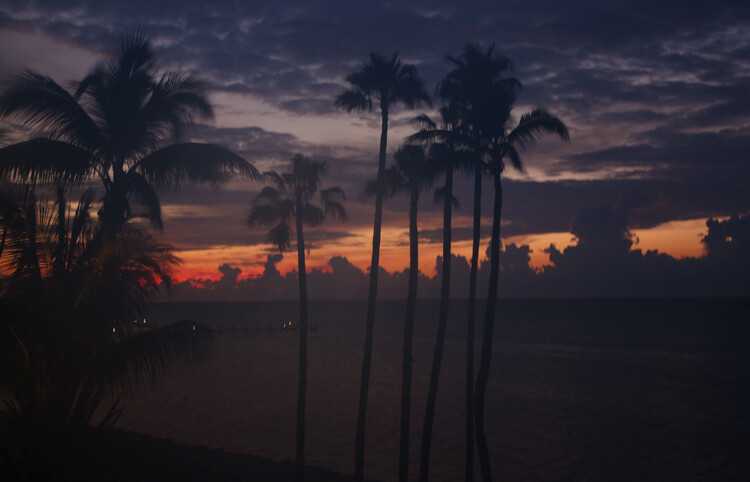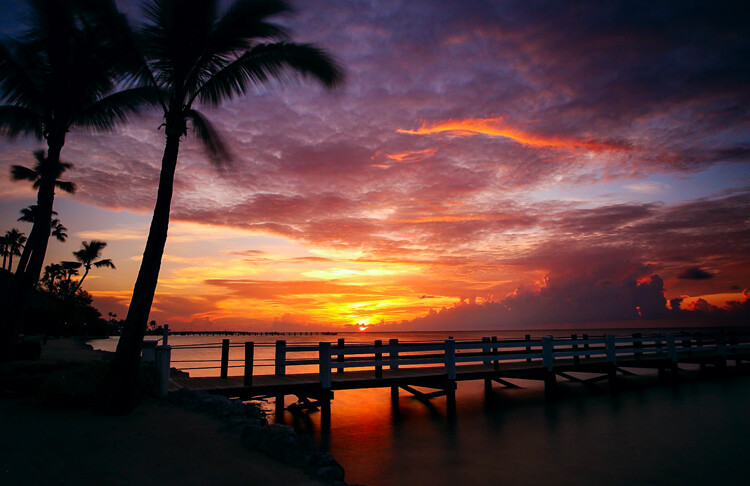The post 6 Tips for Avoiding a Foggy Lens appeared first on Digital Photography School. It was authored by Jim Hamel.

Has this ever happened to you?
- You are on vacation at the beach. You decide to photograph the sunrise or sunset, so you grab your camera from your hotel room and head out. You get to the perfect spot and look through the viewfinder at the beautiful sunrise/sunset – only to find that your lens is completely fogged over. You wipe away the condensation from the front of the lens, but it instantly comes right back. Over and over again.
- You’re in your car, and you spot something you want to photograph. You pull over, hop out, and set up the shot – only to find that the lens is fogged over, and every time you wipe it away, the fog comes right back. You miss the shot.
In coastal and tropical environments, lens fog happens all the time. Transferring your camera and lens from a cool, low-humidity location like your car or hotel room to a warmer, high-humidity environment causes condensation to form on the lens – which, in turn, causes you to miss photos (and can increase lens issues down the road).
Plus, humid environments are where most folks go on vacation/holiday, and therefore where they tend to take the most pictures. Meaning that the foggy lens problem ruins a lot of shots.
So what do you do? How do you keep a camera from fogging up? And once it’s happened, how do you deal with the condensation? Is there any way to defog a lens?
Read on to find out.
Dealing with a foggy lens
So how do you fix this problem?
Well, I have bad news:
Once your lens is foggy, there’s not a quick and easy fix. There are a few things you can try, which will be addressed at the end of the article, but you just have to keep wiping off your lens and waiting for it to acclimate. This can take a while. Sometimes it just takes a few minutes for the lens to acclimate and stop fogging over, but other times it can take half an hour.


So: since there’s no on-the-spot fix, you have to avoid the problem in the first place – by letting your camera and lens acclimate ahead of time.
Obviously, you cannot just leave your camera bag lying around outside. You will need to let everything acclimate safely. Here are some tips for preventing a foggy lens while keeping your camera gear safe:
1. Leave the camera outside (but in a safe place)
If you have a secure hotel balcony, you might put your camera and lens outside to let them acclimate. You probably don’t want to leave gear out overnight, though. Security concerns aside, the coastal environment is not friendly to electronics, and prolonged exposure isn’t great for your camera. You can, however, place the camera and lens out on the balcony or other secure place while you prepare to go out. (Leaving them outside for 30 minutes or so ought to be sufficient.)
If you are getting up early to shoot a sunrise, for example, you might place your camera and primary lens outside immediately after you wake up, and let them acclimate while you are getting ready to go. That will give them some time to fog up and defog before you need to shoot.
(Also, once you’re ready to go, place your camera and lens in your camera bag while still outside, zip it up, then bring it in. You don’t want to reverse all your acclimation work by causing your equipment to cool down all over again!)
2. Keep the camera in the trunk
When you are driving around or headed to your photo shoot location, keep your camera and lenses in the trunk of your car. That way, they avoid the air conditioning and can acclimate to the outside temperature and humidity.
Sometimes, however, you want to keep your camera handy (just in case you come across a great shot). If that’s the case, turn the AC off and roll down the windows. This will keep your camera and lens out of the air conditioning so they acclimate to the temperature and humidity outside, while ensuring you can still grab a shot or two if need be.
3. Get your equipment out of the bag
If you leave your camera and lens in a zipped-up camera bag, the acclimation process will take far longer. A camera bag, while certainly not airtight, will prevent airflow and keep your camera and lens surrounded by cool, dry air – which will cause condensation the moment you open your gear up to the surroundings.
Instead, when you are acclimatizing the camera and lens – whether that be on the hotel balcony, in the trunk of your car, or some other place – keep them outside the camera bag.

4. Remove the caps and filters
The front of your lens likely has the biggest problem with condensation, so that’s the part you should spend the most time and effort acclimating.
While there aren’t many ways to focus acclimation on a specific lens element, you can take off any filters or lens caps. You don’t want an ND filter or a lens cap keeping the warm air from equalizing the temperatures. Because as soon as you take either of these elements off to shoot, the warm air will rush in – and the fogging will occur.
5. Keep a microfiber cloth handy
Once the condensation happens, you just have to ride it out until your camera and lens acclimate. At the same time, you should periodically wipe off the front of the lens. That way, you can see if the condensation is going to return, and whether you can start shooting. If you are not wiping the lens off periodically, you just won’t know.
In addition, if the fogging isn’t too severe, you can wipe off the lens and then quickly snap a shot or two before the lens starts fogging up again. That usually works after the acclimation process has been going on for a while.
So keep a microfiber cloth handy for this reason. If you don’t have one, you can use whatever is available to wipe off your lens, like your shirt (I’d like to scoff at the idea, but I’ve been forced to wipe lenses with my shirt many times).
Before your outing, buy a couple of clip-on microfiber cloths that come in little pouches. You can just clip one to your camera strap and you’ll always have it handy. This will also keep you from having to dig through your bag to find your cloth (because they always head to the bottom in a hard-to-reach corner!).
6. Fix it in post-production
A picture with any significant fogginess due to condensation is a goner. You will not be able to save it.
But if the picture only has a minor amount of fogginess, you can try to clear it up. There are no surefire cures, but my suggestions below will help in some cases.
Your first thought should probably be to increase the contrast and clarity in Lightroom or ACR. That will work a little bit, but a slightly stronger move is to take the photo into the LAB color space and perform a basic LAB color enhancement. A fortunate side-effect of the color enhancement is that you’ll remove haze from the picture.
Again, neither tactic is a magic wand, but they can help.

Avoiding a foggy lens: final words
Condensation is definitely a trap for the unwary. Light conditions change fast. Optimal conditions at sunrise and sunset are fleeting. You don’t want to be standing around waiting for the condensation on your lens to disappear!
So take steps to avoid the problem. Acclimate your camera and lens ahead of time, then make sure you are wiping off the front of your lens periodically. It will keep you from missing shots when the light is optimal!
Now over to you:
Do you have any advice for dealing with camera and lens condensation? Any defogging tips or tricks? Share your thoughts in the comments below!

The post 6 Tips for Avoiding a Foggy Lens appeared first on Digital Photography School. It was authored by Jim Hamel.
























You must be logged in to post a comment.